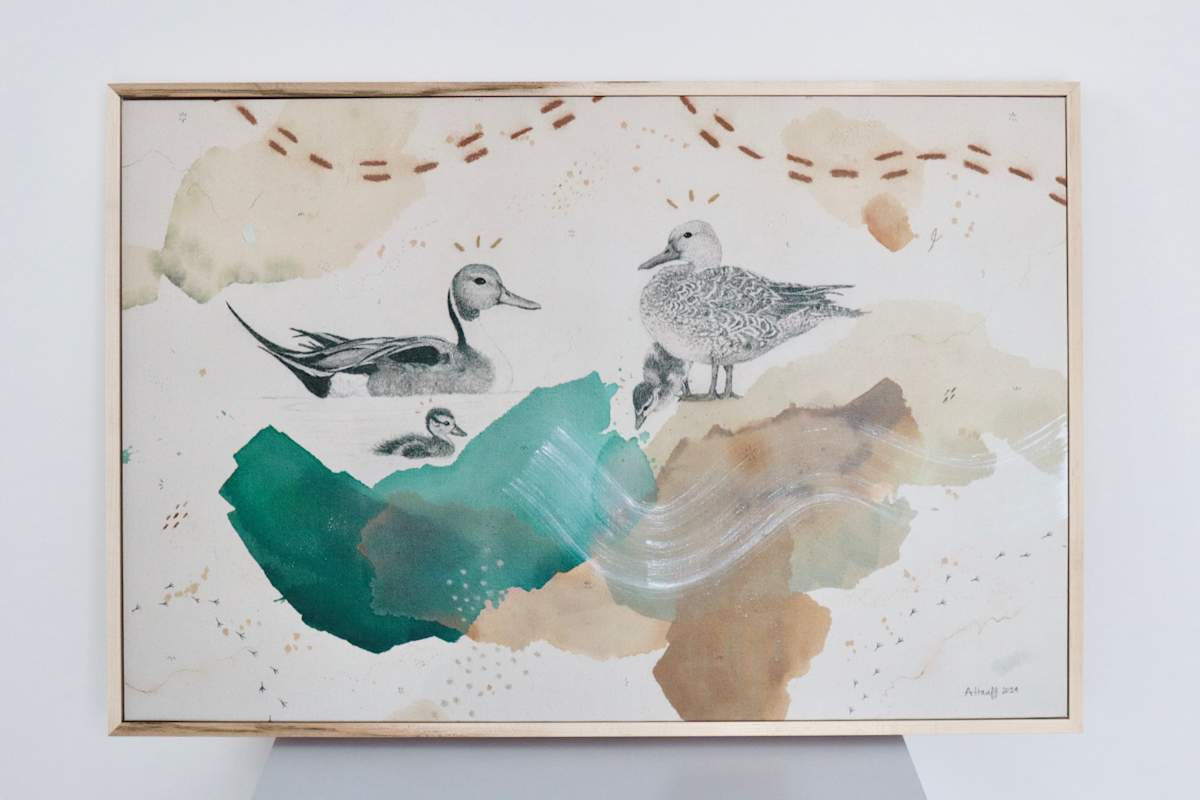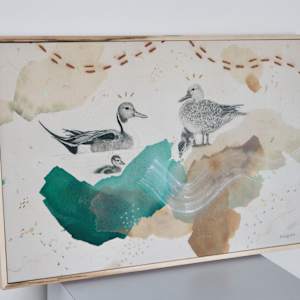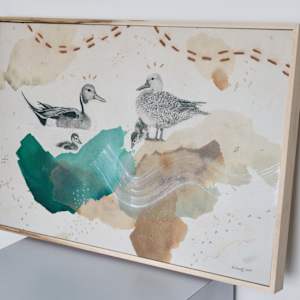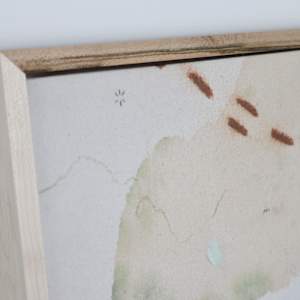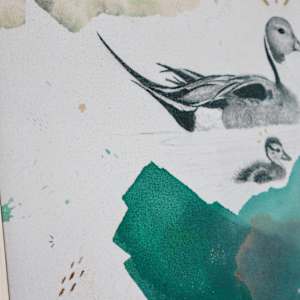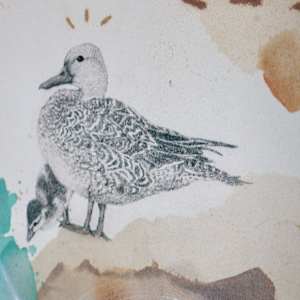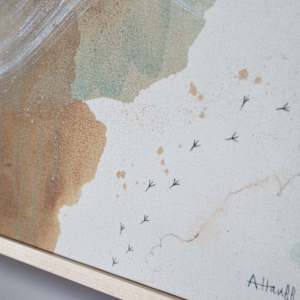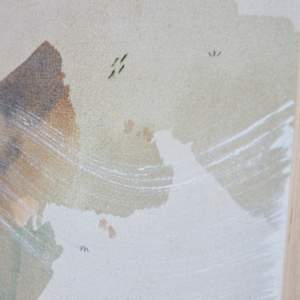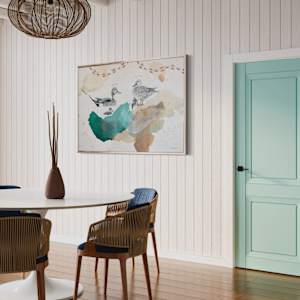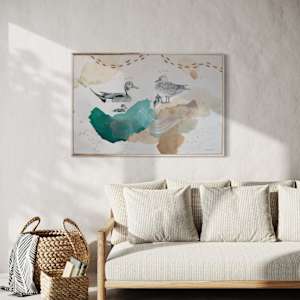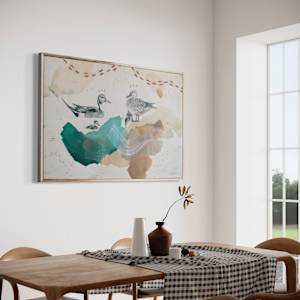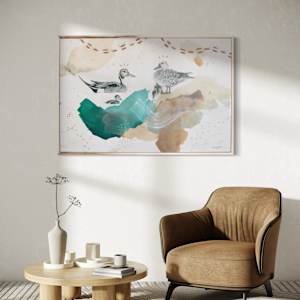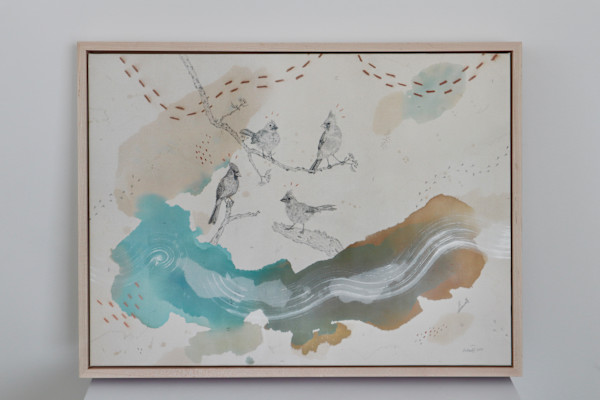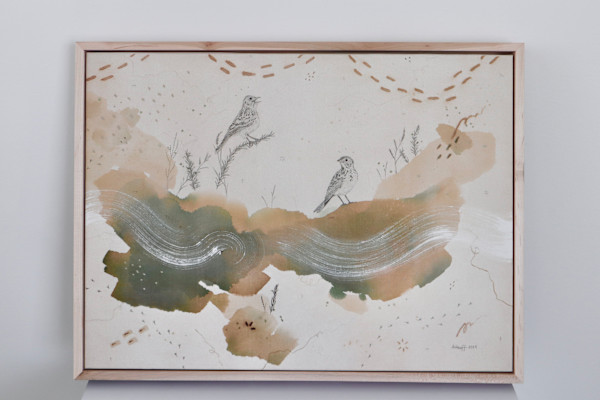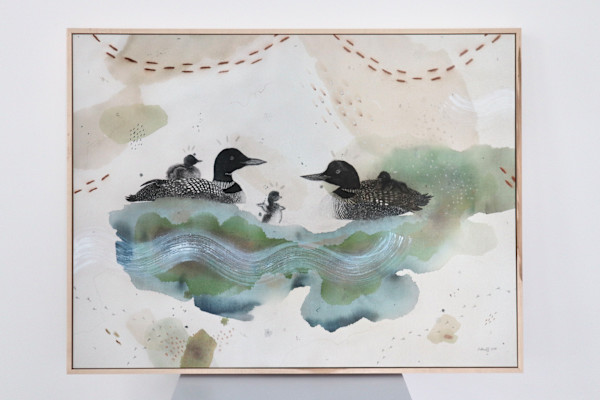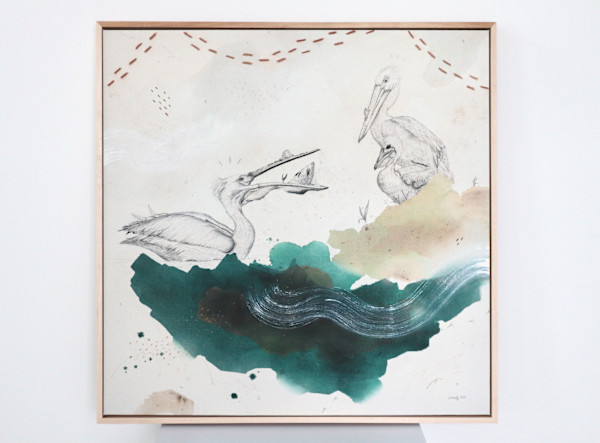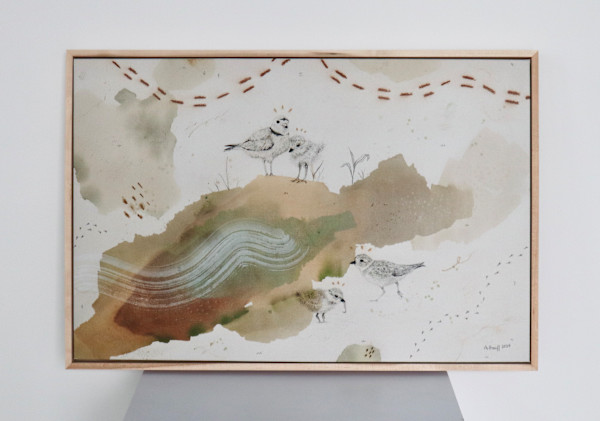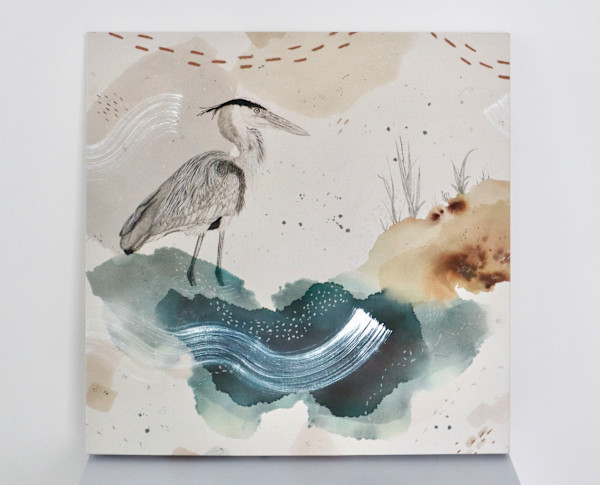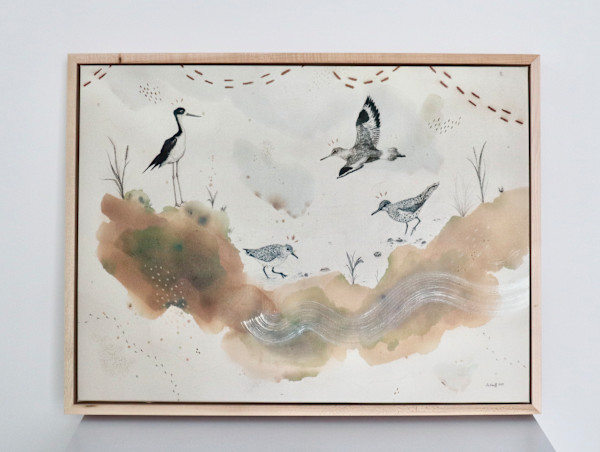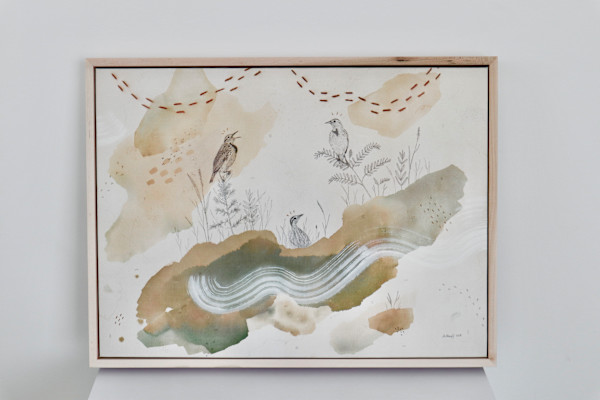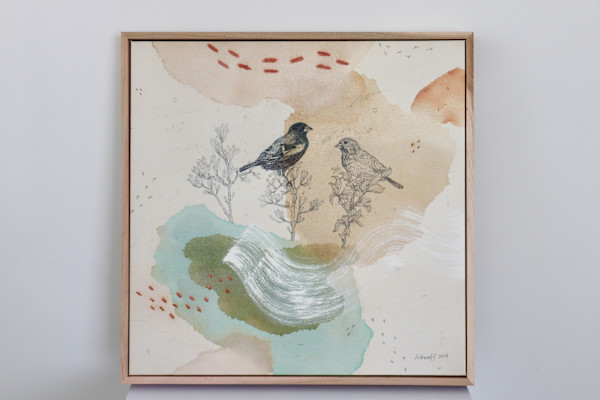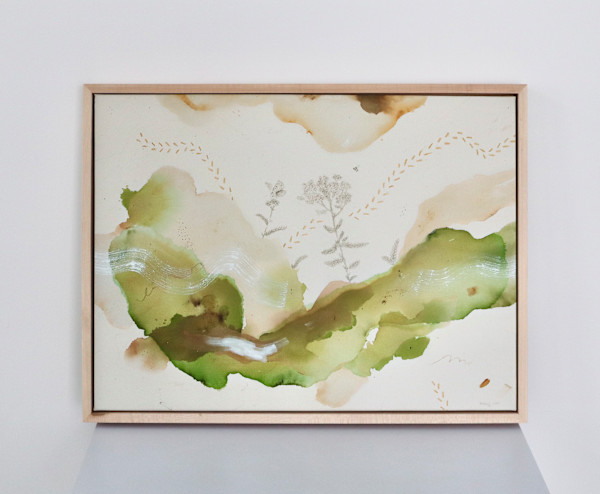Though these elegant ducks will forage and congregate with other ducks, their long necks and males’ pointed ‘pin’ tails stand out from the crowd. Females have a pale face and intricate body pattern, while males have a chocolate brown head with white stripe to chest, and black to grey body.
Pairs form on wintering grounds, and generally stay together for one mating season. Breeding grounds are widespread throughout Canada into the Prairie Pothole region of the Northern Midwest. They arrive in northern areas to breed just as soon as the ice thaws. Nonbreeding habitat is in Southern states and into Mexico. Males and females search for a nesting site with short vegetation and build nests on the ground in wetlands and sometimes croplands. The female adds grasses and down to the base of the nest and lays 3 to 12 eggs in one brood. Chicks are able to leave the nest soon after hatching. Males and females lift their chins to greet each other, and males rarely fight.
They dine on seeds from aquatic plants, insects, worms, crustaceans, snails, and several types of grain.
Pintail populations had declined by 75% from 1966 to 2019, and wetland conservation to protect their habitat has helped reverse this. The USFWS manages hunting and tracks the population, which is affected by drought and the loss/cultivation of wetlands.
This is a matte giclee print made-to-order with archival ink. Available in multiple sizes rolled, stretched, or stretched and framed with seven hardwood options.
- Subject Matter: shorebirds/waterfowl
- Collections: Fine Art Canvas Prints

